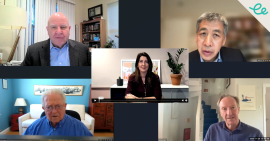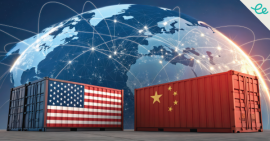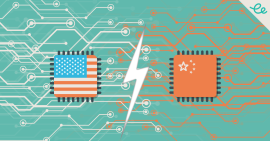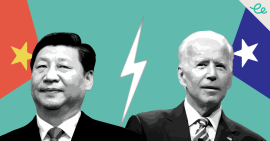“This is not my trade war, this is a trade war that should have taken place a long time ago, by a lot of other presidents,” said Donald Trump of the issue dominating US China relations during his presidency. This article is a summary of important US China news in August 2019.
“Somebody had to do it. I am the chosen one,” claimed Trump, who added that China has been “ripping off” America for 25 years or more. By the end of the month, the two sides appeared to be in talks about talks in September, but Trump’s flip-flopping and determination to depict China as caving in negotiations have confirmed Beijing’s worst fears –he can’t be trusted to cut a deal, Chinese officials told Bloomberg.
As both sides planned tariff hikes, China’s commerce ministry said the possibility of progress at talks likely in September hinges on whether Washington can create favourable conditions. Two Chinese officials likened the country’s trade war approach to the US during the Korean War, saying it “consisted of fighting while talking, and using fights to speed up talks.”
While American farmers are frustrated by the trade war, US companies keep piling into the PRC, with a small increase in investment in H1. US companies operating in China are increasingly profitable, “but the ongoing trade dispute is putting at risk years of steady progress.”
Trump announced an additional tariff increase of 5% on imports from China, raising its tariffs on $250bn of Chinese imports from 25% to 30%, starting on October 1st. He also said planned tariffs on $300bn of other Chinese goods will be raised to 15% from 10%. The move came shortly after he hit out at Chinese plans to hit $75bn of US goods with duties.
While Trump’s team insisted their strategy isn’t hurting the US economy, JP Morgan Chase estimate the tariffs cost the average American household $600 per year, and the planned return of US jobs isn’t happening. Pompeo said he believed the trade war could end by the 2020 US presidential election.
Commerce Secretary Ross granted a 90-day reprieve for US firms to “wean themselves off” Huawei, but Washington also kept pressure up by adding 46 more Huawei affiliates onto a blacklist. Citing national security concerns, the Trump administration announced a ban on federal agencies buying equipment and services from Chinese companies such as Huawei.
On August 5th China let its currency weaken 1.4%, sending it past the key 7-per-dollar level for the first time in more than a decade, sending foreign exchange markets into a spin. The US responded by designating China as a currency manipulator at Donald Trump’s behest. Meanwhile, China’s state media went into overdrive, reassuring the country’s millions of small savers that the move was justified, market-driven and unlikely to mark the start of a larger depreciation.
After Shanghai trade talks ended in failure, Trump stole the show by announcing that the US will impose new tariffs on $300bn worth of Chinese imports from September 1. He blamed Beijing’s lack of farm purchases and failing to stop opiate sales to the USA. Ending a month-long truce, the new levies will hit consumer goods in the US from cell phones and laptop computers to toys and footwear.
“Adding tariffs is definitely not a constructive way to solve the economic and trade frictions,” responded Foreign Minister Wang Yi. “It is not a correct way.” The move “will drive the Chinese from the negotiating table,” worried the US-China Business Council. China retaliated to what it called Washington’s “serious violation” of the consensus Xi and Trump reached at their G20 meeting (Osaka) in June, by stopping buying U.S. agricultural products , a movecalculated to hurt Trump’s base.









Comments are closed.